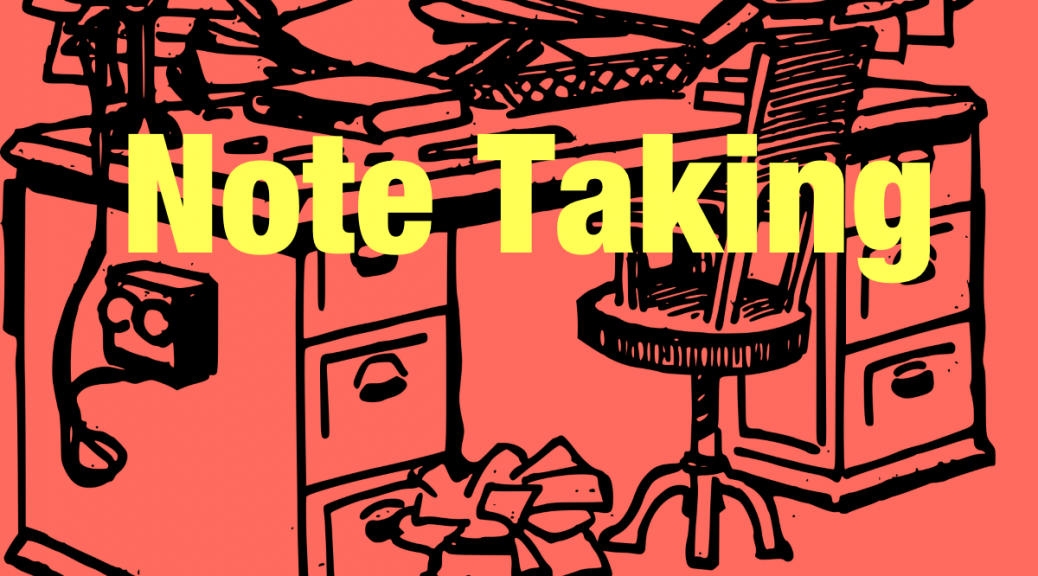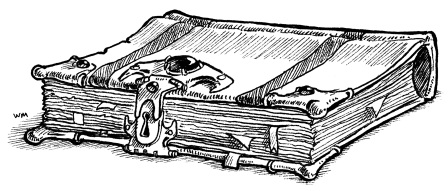Today on the podcast, I recorded my second Saturday Scrawl about encumbrance.
This got me to thinking about bags of holding and of course their counterpart, bags of devouring.
Here’s a sneaky way to handle bags of devouring. It is devious and players will hate you for it.
This is not like the normal bag of devouring from the 1e DMG on pages 137-138, but something different.
Whether it is a mimic like creature or some other creature or a magical object is up to the DM. This is a Dormant Bag of Devouring. This bag functions as a normal bag of holding until a set condition occurs. The DM must determine this condition when the item is placed as potential treasure.
Creature
If the bag is a creature of some kind, the DM must determine where does the treasure go? It can be a pocket dimension, another plane, or a specific location on the planet. This opens up the possibility of having it disgorge all the treasure it has ever eaten, leading to hilarity as the Scrooge McDuck vaultful of coins fills the location where it was slain.
Detemine the age of the bag to determine the volume of its lifetime of meals.
1d6 NOTE: The below is in addition to treasure the party puts in it.
- New/Baby only the contents of a volume equal to the size of the treasure in which it is found.
- Juvenile volume is 5 times the treasure in which it is found.
- Young adult volume is 10 times the treasure in which it is found.
- Adult volume is 15 times of original treasure.
- Mature volume is 20 times of original treasure.
- Ancient volume is 25 times original treasure.
Treasure may be in coins, gems, ingots, and other things capable of fitting into its opening (mouth). Damage from falling coins will be 1d6 per 100 coins or gems, and 1d8 per falling ingot. Characters may use their best saving throw to attempt to dodge the falling loot, or attempt to “float” or “climb” to stay above the torrent. If this happens in a small room, it will soon be filled and pour out into all openings and could potentially overflow a small dungeon, sink a ship, topple a tower, etc. Wooden structures must make a saving throw to resist bursting and collapsing.
The best hope is to be in a huge cavern or in the open air when this occurs.
Magic Item
If a magic item, this is a crafty device developed by mages in need of cash. These bags of holding will empty their contents into a space
designated at the time of their creation that is capable of holding it all safely. This will be a room of sturdy stone construction with a heavy door. Often the access door is hidden by illusion or craftsmanship, and is always wizard locked at the current level of the owner.
These devices are often given as rewards to adventuring parties that help the wizard achieve their goals. Successful adventurers are more likely to find treasure.
There will be some sort of alert, so the mage knows to empty the room. Perhaps a magic mouth or other spell.
If a quick thinking party caster can cast knock BEFORE it finishes consuming its contents, it will shred the bag and open a portal to the treasure vault. This portal will endure for 1 turn. If there is no knock available for the access door, and they can’t find the access door, they are trapped without some other means of egress, such as teleport.
If the vault is filled, roll percentile dice for the amount of treasure that spills out before the portal closes.
Instead of knock, if hold portal is cast, the mouth of the bag is opened to the standard dimensions of a door and the party has the duration of that spell to attempt to recover their treasure and avoid being trapped as in the example using knock. In this case, the bag will fall harmlessly to the ground, waiting for its next use. If the entire party is in the treasure vault, they bag will lie there until found by another. If some of the party remains they can attempt to fill the bag until it is triggered to consume and cast one of the spells effective to shred or open it.
There may be other spells that allow the players to subvert the intended use of the bag as determined by the DM.
NOTE: The creator of the bag, or their heir, descendant, or successor will often know that something is amiss and will seek to prevent the party from making off with the treasure. It may be possible for them to see the party, as with a crystal ball, spell, or other device and be able to track them.
Triggers
A dormant bag may be triggered to consume its contents by many things. The trigger can be activated by a specific spell near it, a set interval of time, when a specific type of creature is near, or in a specific place. The DM must determine the trigger for each bag before placing it in a treasure.
Examples of spells might be fireball. This would be bad for the party if they cast fireball in a room with the treasure where it is found, as it will attempt to consume the treasure. This is an atypical function of the bag. In this case it will open its mouth wide to grab a pile of treasure it is in, or to inhale all the valuables that are party of the treasure. NOTE: IF the party bests the creature who owns the treasure, the items on their person are not considered part of that loot.
A set interval of time could be once a year, or a certain amount of time after it is filled to maximum capacity, or a certain time of day.
A specific place and time might be to consume all the treasure of a dragon’s hoard if the party has the bag with them when they defeat the dragon, or if the bag is party of the dragon’s hoard.
The available triggers to choose from are only limited by the DM’s imagination.
Consuming The Treasure
Once the delayed bag is triggered, those who posses it will hear an omm nom nom, sound like Cookie Monster going nuts with a plate of cookies. However, it is only the om nom sound, followed by a large burp when completed. If the party is in a loud environment like walking through the streets during festival, in a rowdy tavern, in the midst of combat, roll to see if they notice the om nom sound. The burp will be a hearty one and if they miss the om nom sound will think a member of the party is responsible for the noise.
If the party cannot hear because of a silence spell, or some other cause of deafness, they will miss these audible clues.
Just like a bag of holding, the weight is the same and they will not discover it is empty until they go to draw something from it.
Finding The Loot
You should allow some chance for the party to find the loot. A wish, for example will give them the name and address of a wizard who crafts such a bag, or the location the loot has gone if it is a creature. Scrying by spell or device may be effective, unless the mage who crafted a bag has means in place to prevent it. A creature type bag will have its treasure location susceptible to scrying, should the party posses or find such means.
Scrying is only effective within a limited amount of time. It might be one day or week per level of the spellcaster doing the scrying. Make it an amount of time that is within the realm of possibility for the party to find it, if they choose to do so. If they don’t realize that scrying is a possibility within the time limit, that is fine, not everything should be automatic. A wish of course, will trump all, if it is worded properly to prevent unintended consequences.
Special Cases
Mages who plan the design of their bags carefully will have in place safeguards that prevent cursed items from being put in the bag.
Artifacts and certain other powerful magics cannot be placed in these bags due to the nature of their power and magic. Powerful items include any item with a wish, like a luckblade, deck of many things, intelligent items like swords, and items that contain the soul or essence of another creature whether mortal or otherwise. The DM should consider what items are powerful enough to withstand being placed in the bag.
When an item that is cursed or too powerful is placed in the bag, it will not even enter the bag, like it is repelled by a magnet. This repulsion does not propel the item with any great force. It merely prevents placing it in the bag. This effect will hold true if a crafted bag is held open by means of hold portal or similar.
Additionally, items that act as a beacon to overcome scrying cannot be placed in a bag. This is of course optional.
Plot Hook: There may be a certain legendary item, or other item, that the mage wants and they may bargain, cajole, or geas a part to find some component needed to complete a bag that will accept the artifact. Then the bag is given to the party with directions to the artifact.
If you have lots of these bags in your game, you may want only some of them to prevent the creator from getting these items.
If you only have one of these bags in your game you will want to consider special cases.
Any other special case you can think of may be used.
There could even be a legendary item that is an artifact with all the risks and rewards of same, that is capable of receiving other artifacts and powerful items, perhaps it will transfer the curse on a cursed item to another object such as a coin or other magic item, or even a person. Such as the person who puts the cursed item in the bag.
Other Uses
A variation of this bag is carried by tax collectors to ensure that their collected revenue ends up in government coffers.
A master of a thieves guild might commission such a bag so that operatives can’t cheat the guild out of what is owed.






